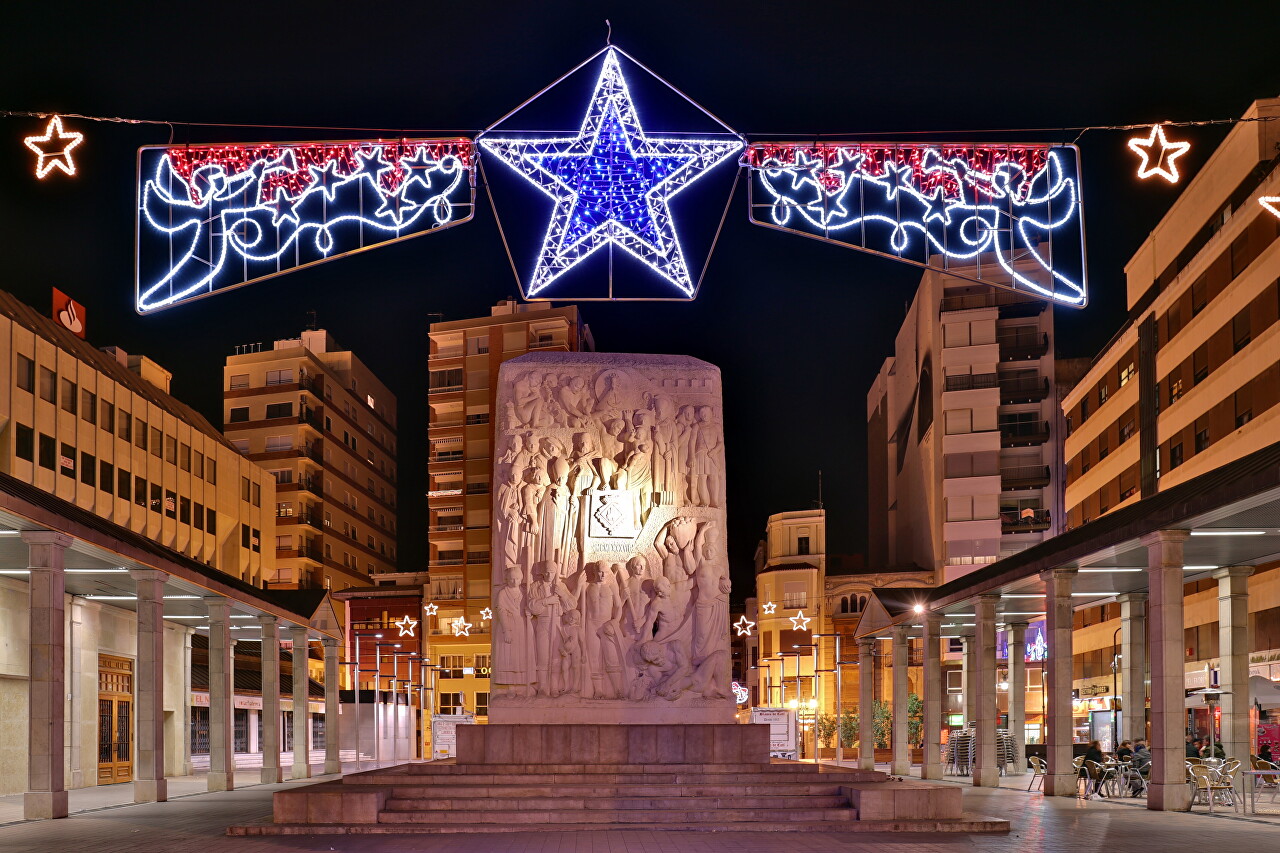Night Walk in Castellón de La Plana
Late in the evening, I took a tripod and went to a night photo shoot. I stayed at the Hotel Real, located next to Plaza Puerta del Sol, where I started my walk. This is the business center of the city, where the offices of leading Spanish banks are located, as well as the old casino, which I have already told you about.

Then I took the Carrer de Gasset to Plaza La Paz, located a hundred meters to the east. The square is surrounded by modern multi-storey buildings, but it has several attractions: Valencian Art Nouveau shopping pavilion for snacks and drinks. During the day, there were tables around the pavilion, and I dined here for a very reasonable fee.

To the right of the cafe there is a ceramic panel in memory of the railway line, nicknamed by locals La Panderola (in Valencian "cockroach") because of the color of the locomotive and the complete lack of traffic schedules. The line was built in 1888 and was used to transport products from the ceramic factories of Onda to the port (Grao de Castellón), and there were also passenger cars on the trains. The road remained in demand even in the second half of the twentieth century, having worked until 1968. Now the locomotive and freight car can be seen in the park of Panderola (Parque de la Panderola) in the seaside district of the city. There is also a monument to the Castellon peasant. It was established in 2003 on the occasion of the centenary of the Rural Bank of Castellon (Caja Rural Castellón), whose main customers were farmers.

The facade of the Main Theater (Teatro Principal), built in 1894 in the neoclassical style, faces La Paz Square. In front of the theater in 2010, the sculpture "Poetic Double Bass" (Contrabajo Poético) by Pero Ribera was installed.

Then I followed the Carrer Mayor to Plaza Santa Clara, where the Homenaje a Castellón monument (Dedicated to Castellón) was opened in 1965. A sculptural panel by Llorens Poy depicts famous people of the city.

After walking around the central market building, I came out on Plaza Pescaderos (Fish Square). Since the Middle Ages, fishermen have brought their prey here for sale. The fish market operated here until 1951.

Rounding another corner of Mercado Central, I found myself at Plaza Mayor, the historic center of Castellon de la Plana, where the main architectural monuments are located: the Municipality, El Fadri Tower and St. Mary's Cathedral.

The square has been a public place since the founding of the city - it hosted festivals, plays, and bullfights.

Although the central market was built in 1945, it fits perfectly into the overall ensemble of the square.

In December, there is a Christmas market on the square, and in front of St. Mary's Cathedral there are uncultured compositions on Biblical themes, very beautifully illuminated in the evening.

Finally, I took a walk to the Bishop's Palace (Palacio Episcopal), which is located a couple of blocks east of Plaza Mayor, on the street with the long name Calle del Gobernador Bermúdez de Castro. The palace was built in 1793 at the expense of the Bishop of Tortosa, friar Antonio Jose Salinas. Construction work was supervised by Miguel Tirado. The neoclassical building looks very modest. On the main balcony is the coat of arms of the bishop, above the entrance-a plate with the names of the builders of the building.

I decided to end the walk there, as I had to get up early tomorrow to visit the shrine of the Virgin of Ledo.

On my way back to the hotel, I was surprised to see that the streets were completely empty and the numerous cafes and pubs were deserted, even though it was the last New Year's Eve evening. Apparently, the audience was saving up for the next night.
